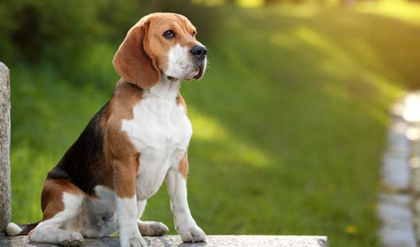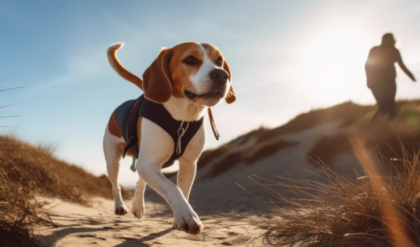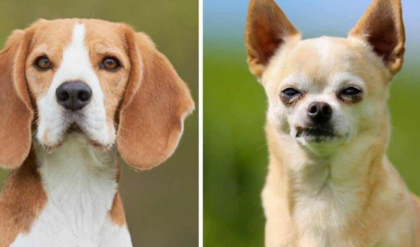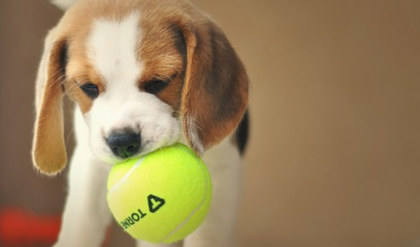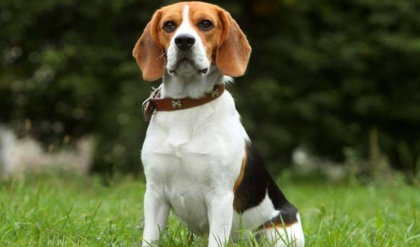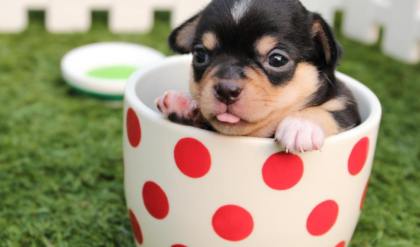Beagles are beloved companions known for their friendly nature, keen sense of smell, and adorable appearance. These charming hounds have captured the hearts of dog lovers worldwide. Whether you’re considering adding a Beagle to your family or simply curious about the breed, it’s essential to understand the different types of Beagles and their unique characteristics. In this comprehensive guide, we’ll explore the various Beagle types, their traits, and help you find the perfect match for your lifestyle.

Standard Beagle: The Classic Companion
The Standard Beagle is the most common and widely recognized type of Beagle. Known for their friendly disposition and versatile nature, these dogs have become a popular choice for families and individuals alike.
Physical Characteristics
Standard Beagles typically stand between 13 to 15 inches tall at the shoulder and weigh between 20 to 30 pounds. They have a sturdy, compact build with a short, dense coat that comes in various color combinations. The most common colors include tricolor (black, tan, and white), red and white, and lemon and white.
Their expressive eyes, long floppy ears, and distinctive white-tipped tail contribute to their endearing appearance. Standard Beagles have a muscular body that reflects their hunting heritage, allowing them to be both agile and enduring.
Temperament and Personality
Beagles are known for their friendly and outgoing nature. They are generally good-natured, curious, and eager to please. This makes them excellent family dogs, as they tend to get along well with children and other pets.
However, their strong hunting instincts can sometimes lead to stubbornness or independence, especially when they catch an interesting scent. This trait requires patient training and consistent socialization from an early age.

Exercise and Living Requirements
Standard Beagles are energetic dogs that require regular exercise to stay healthy and happy. They are adaptable to various living situations, from apartments to houses with large yards. However, regardless of living space, they need daily walks, playtime, and mental stimulation.
Their exercise needs make them ideal companions for active individuals or families who enjoy outdoor activities. Beagles excel in activities like hiking, jogging, and even agility training, which can help channel their energy and satisfy their curious nature.
Health Considerations
Like all breeds, Standard Beagles are prone to certain health issues. Some common concerns include hip dysplasia, eye problems (such as glaucoma and cherry eye), hypothyroidism, and epilepsy. Regular veterinary check-ups and a balanced diet are crucial for maintaining their health.
Due to their love for food, Beagles can be prone to obesity if their diet is not carefully monitored. Owners should be mindful of portion control and avoid overfeeding, as excess weight can lead to various health problems.
Toy Beagle: Compact Charm
The Toy Beagle is a smaller version of the Standard Beagle, offering the same lovable personality in a more compact package. These diminutive hounds have gained popularity among those looking for a Beagle that’s easier to manage in smaller living spaces.
Size and Appearance
Toy Beagles typically stand under 13 inches tall at the shoulder and weigh between 15 to 20 pounds. Despite their smaller size, they maintain the same proportions and general appearance as their larger counterparts. Their coat colors and patterns are similar to those of Standard Beagles, featuring the classic tricolor, bicolor, and single-color variations.
Temperament and Behavior
Toy Beagles share the same friendly and outgoing temperament as Standard Beagles. They are often described as playful, affectionate, and good with children. Their smaller size can make them more suitable for families with younger kids or elderly individuals who might find a larger dog challenging to handle.
However, it’s important to note that their diminutive stature doesn’t diminish their Beagle instincts. Toy Beagles still possess a strong sense of smell and may be prone to following their noses, potentially leading to wandering if not properly supervised.
Living Requirements and Exercise Needs
One of the primary advantages of Toy Beagles is their suitability for smaller living spaces. They can adapt well to apartment living, making them an excellent choice for urban dwellers. However, despite their smaller size, Toy Beagles still require regular exercise and mental stimulation.
Daily walks, playtime, and interactive toys are essential to keep them physically and mentally healthy. While they may not need as much space as their larger counterparts, Toy Beagles should not be considered low-energy dogs. They still possess the typical Beagle enthusiasm and require outlets for their energy.

Training Considerations
Training a Toy Beagle requires patience and consistency, much like training any Beagle. They can be stubborn at times, but their intelligence and eagerness to please make them generally responsive to positive reinforcement techniques.
Early socialization is crucial to ensure they develop into well-rounded adults. Exposing them to various people, animals, and environments during their formative months can help prevent shyness or anxiety later in life.
Pocket Beagle: Myth or Reality?
The term Beagle often creates confusion and controversy in the Beagle community. It’s essential to understand the history and current status of this purported Beagle type to make informed decisions when considering a Beagle companion.
Historical Context
Historically, the term Beagle referred to a very small type of Beagle that existed in England during the 16th century. These miniature hounds were small enough to be carried in a hunter’s pocket or saddlebag, hence the name. They were used for hunting small game and were popular among the nobility.
However, this original Pocket Beagle is believed to be extinct. The modern breeding practices and standards have evolved significantly since then, focusing on larger, more robust Beagles better suited for hunting and companionship.
Modern Pocket Beagles
Today, the term Beagle recognized by major kennel clubs or breed associations. What some breeders market as Pocket Beagles are typically smaller examples of Toy Beagles or simply undersized Standard Beagles.
It’s crucial to be cautious of breeders advertising Pocket Beagles, as this term is often used misleadingly. In some cases, unethical breeders may intentionally breed runts or use questionable practices to produce extremely small Beagles, which can lead to health issues and genetic problems.
Ethical Considerations
When encountering advertisements for Pocket Beagles, potential owners should approach with caution. It’s essential to research thoroughly and verify the credibility of the breeder. Reputable breeders will focus on producing healthy, well-socialized puppies that meet established breed standards rather than marketing based on size alone.
If you’re interested in a smaller Beagle, consider adopting a Toy Beagle from a reputable breeder or rescue organization. These dogs offer the compact size some owners desire without the ethical concerns associated with the Pocket Beagle label.

English vs. American Beagle: Understanding the Distinction
When discussing Beagle types, it’s common to hear references to English Beagles and American Beagles. However, it’s important to understand that these are not separate breeds but rather reflect differences in breed standards between kennel clubs.
Breed Standards
The primary difference between English and American Beagles lies in the ideal physical characteristics described by their respective kennel clubs. The American Kennel Club (AKC) and the Kennel Club (UK) have slightly different standards for what constitutes the ideal Beagle.
American Beagles, as defined by the AKC, tend to be slightly taller and have a more square-shaped head. English Beagles, according to UK standards, are typically shorter and have a more rounded skull.
Physical Differences
While the differences are subtle, some general distinctions can be observed:
- Size: English Beagles are often slightly shorter, typically standing between 13-14 inches at the shoulder, while American Beagles can reach up to 15 inches.
- Head shape: English Beagles tend to have a more domed skull and a slightly shorter muzzle, giving them a more rounded appearance. American Beagles often have a more square-shaped head with a longer muzzle.
- Body structure: English Beagles may have a slightly more compact body, while American Beagles can appear more athletic and streamlined.
Temperament and Behavior
Despite these physical differences, there is no significant distinction in temperament or behavior between English and American Beagles. Both types share the characteristic Beagle traits of friendliness, curiosity, and a strong sense of smell.
The differences in appearance are primarily the result of selective breeding to meet different show standards rather than functional differences. In terms of companionship and overall personality, English and American Beagles are essentially the same.
Choosing the Right Beagle for You
Selecting the perfect Beagle type for your lifestyle requires careful consideration of various factors. Whether you opt for a Standard Beagle, Toy Beagle, or are simply exploring your options, it’s essential to make an informed decision.
Assessing Your Lifestyle
Before choosing a Beagle, honestly evaluate your lifestyle and living situation:
- Living space: Consider the size of your home and whether you have access to outdoor areas. While Beagles can adapt to apartment living, they thrive with regular outdoor exercise.
- Activity level: Assess your own energy level and willingness to provide daily exercise. All Beagle types require regular physical activity and mental stimulation.
- Time commitment: Beagles are social animals that crave companionship. Ensure you have the time to devote to training, socialization, and daily interaction.
Considering Family Dynamics
If you have a family, think about how a Beagle would fit into your household:
- Children: Beagles generally do well with children, but supervise interactions, especially with very young kids.
- Other pets: While Beagles are typically good with other dogs, their strong prey drive may make them unsuitable for homes with small pets like rabbits or hamsters.
- Noise tolerance: Beagles are known for their distinctive howl. Consider whether this would be an issue in your living situation.
Health and Care Requirements
Understanding the health needs of Beagles is crucial:
- Regular exercise: All Beagle types need daily walks and playtime to maintain physical and mental health.
- Grooming: While relatively low-maintenance, Beagles do shed and require regular brushing and occasional baths.
- Health monitoring: Be prepared for regular vet check-ups and be aware of breed-specific health issues.
Adoption vs. Purchasing
Consider adopting a Beagle from a shelter or rescue organization. Many Beagles of various ages and types need loving homes. If you decide to purchase from a breeder, thoroughly research to ensure you’re working with a reputable, ethical breeder who prioritizes the health and well-being of their dogs.
Conclusion
Beagles, in all their varieties, offer a wonderful blend of companionship, loyalty, and charm. Whether you’re drawn to the classic appeal of the Standard Beagle, the compact size of the Toy Beagle, or are simply exploring your options, understanding the different types of Beagles is crucial in finding your perfect match.
Remember that while physical characteristics and size are important considerations, the true essence of a Beagle lies in their loving nature, curious spirit, and unwavering loyalty. By carefully considering your lifestyle, family dynamics, and the specific needs of each Beagle type, you can make an informed decision that will lead to a fulfilling and joyous companionship.
Whichever type of Beagle you choose, be prepared for a life filled with wagging tails, melodious howls, and an abundance of unconditional love. The journey of Beagle ownership is an adventure that promises to bring joy, laughter, and countless cherished memories to your life.

